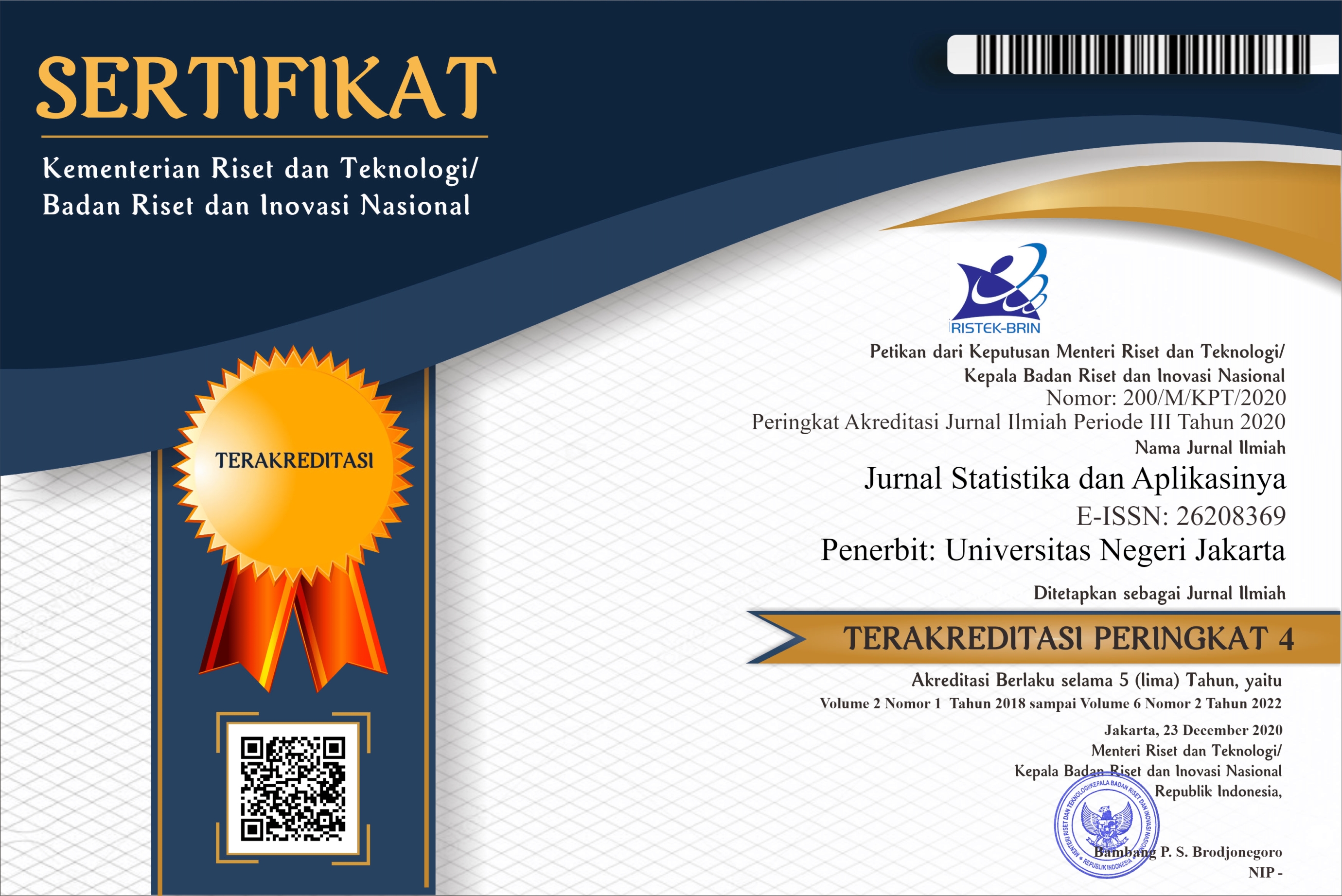Statistical Downscaling Menggunakan Pengelompokan Expectation-Maximization pada Data CFSRv2
DOI:
https://doi.org/10.21009/JSA.06203Keywords:
Expectation-Maximization, Partial Least Square Regression, Principal Component Regression, Statistical DownscalingAbstract
General Circulation Model (GCM) is a numerical model that produce a number of data from various climate parameters that are used to estimate climate, one of which is precipitation. GCM is a global scale data and has high resolution. So, the GCM cannot consider the local-scale areas with a higher resolution than the GCM. Therefore, to be able to use the GCM for estimating the local rainfall, namely Statistical Downscaling (SD). SD is a technique used to get the relationship between global-scale (GCM) and local-scale data. SD use the GCM which consist of dependent variables that have multicollinearity. So in this research, the principal component regression (PCR) and partial least square regression (PLSR) will be used to reduce the multicollinearity. In addition, to reduce the RMSEP and increase the correlation value, a clustering technique will be applied before modeling, namely Expectation-Maximization (EM) clustering. This research use CFSRv2 data as GCM and local rainfall data at four rainfall stations in West Java (January 2011 to December 2017). Based on this research, PCR is a good modeling than PLSR and EM clustering get the lower RMSEP and higher correlation value than without clustering before modeling. The conclusion is PCR with EM clustering is a good method for estimating local rainfall using the SD technique especially rainfall in West Java and CFSRv2 data.






